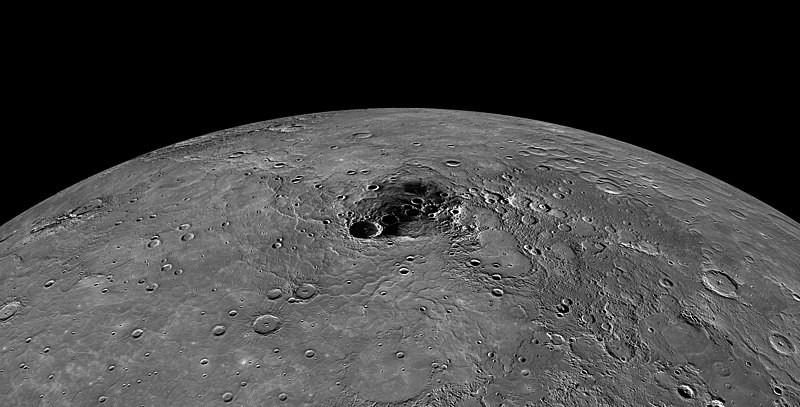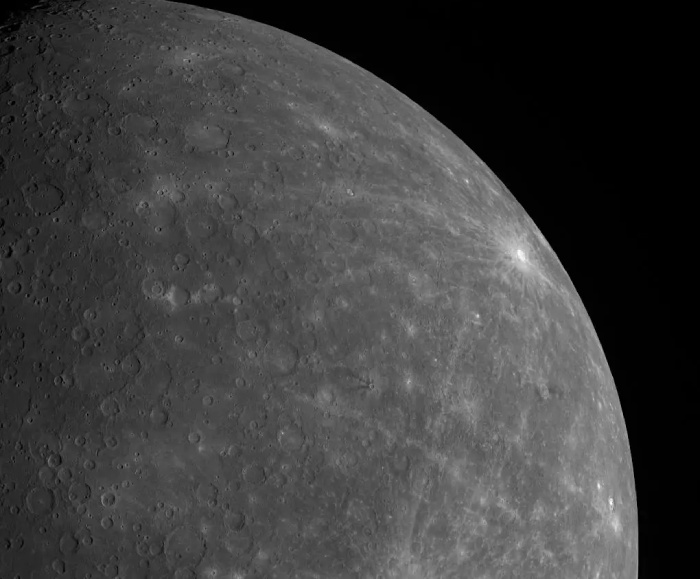Mercury is the smallest planet in our solar system and the closest to the Sun. It’s named after the Roman messenger god Mercury and is known for its extreme temperatures, ranging from extremely hot on its sunlit side to extremely cold on its dark side. Here are some key points about the planet Mercury:
Size and Distance from the Sun
Mercury has a diameter of about 4,880 kilometers (3,032 miles), making it slightly larger than Earth’s moon. It orbits the Sun at an average distance of about 57.9 million kilometers (36 million miles), which is about one-third of the average distance between the Earth and the Sun.
Orbital Period and Rotation
A year on Mercury (the time it takes to orbit the Sun once) is equivalent to about 88 Earth days. In contrast, Mercury rotates on its axis very slowly compared to its orbital period. It takes about 59 Earth days for Mercury to complete one rotation. This means that a day on Mercury (from one sunrise to the next) is longer than its year.
Extreme Temperatures
Due to its proximity to the Sun and lack of a significant atmosphere to regulate temperature, Mercury experiences extreme temperature variations. Surface temperatures on Mercury can range from about -173°C (-280°F) at night to about 427°C (800°F) during the day, making it one of the most extreme temperature environments in our solar system.
Despite being the closest planet to the Sun, Mercury’s surface is not the hottest in the solar system. That distinction belongs to Venus, which has a dense atmosphere that traps heat, resulting in higher surface temperatures.

Surface Features
Mercury’s surface is heavily cratered, resembling the Moon’s surface. Impact craters, formed by collisions with asteroids and comets, are prevalent. The planet also has extensive plains and scarps (cliff-like features) caused by geological activity, including contraction as the planet’s interior cooled.
Thin Atmosphere
Mercury has a very thin atmosphere, known as an exosphere, composed mainly of oxygen, sodium, hydrogen, helium, and potassium. The exosphere is so sparse that atoms and molecules can escape into space easily.
Exploration
Several spacecraft have visited Mercury to study its surface and environment, including NASA’s Mariner 10, which made three flybys in the 1970s, and the MESSENGER spacecraft, which orbited Mercury from 2011 to 2015, providing detailed data about the planet.

Observation
In both the northern and southern hemispheres, the best times to observe Mercury are during its periods of greatest elongation, when it appears farthest from the Sun in the sky. These elongation periods occur approximately every 3 to 4 months as Mercury alternates between being an evening star (visible after sunset) and a morning star (visible before sunrise).
For observers in the northern hemisphere, optimal times to observe Mercury are generally during its evening elongations, when it is visible shortly after sunset in the western sky. In the southern hemisphere, the best times to observe Mercury are during its morning elongations, when it is visible shortly before sunrise in the eastern sky.
Keep in mind that the specific times and visibility of Mercury during its elongations can vary depending on your location and the time of year. You can use astronomy apps or websites to find the specific dates and times of Mercury’s next greatest elongations visible from your location.
Find a location with a clear view of the horizon in the direction where the Sun sets or rises. Mercury will be low on the horizon, so you need an unobstructed view to spot it. Clear skies are essential for observing Mercury, as any clouds or haze near the horizon can obscure your view.
Remember that Mercury’s visibility can vary depending on its position in its orbit and atmospheric conditions at your location. If you’re having difficulty spotting Mercury with the naked eye, consider using binoculars or a telescope, which can provide a clearer view of the planet’s features.



